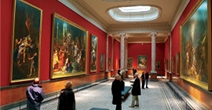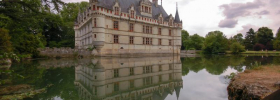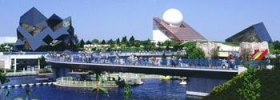 Home
Home- > Tours
- > Provence-Alpes-Côte-d'Azur
- > Bouches-du-Rhône
- > Chateauneuf-les-martigues
- > Châteauneuf-les-martigues
Châteauneuf-les-martigues
| Topic | Sciences and discovery |
| Departure | CHATEAUNEUF-LES-MARTIGUES (13) |
| Details | Small town of the Bouches-du-Rhône of 11.568 inhabitants, Châteauneuf-les-Martigues - la Mède profits from an exceptional natural environment. Located between the pond of Berre and the chain of Nerthe, it forged its identity in teh course of time. Today, the common preserve vestiges of its historical, cultural and environmental past, a past which remains always omnipresent in the heart of the inhabitants. Very attached to the culture, the inheritance and the traditions of Provence, Châteauneuf-la Mède symbolizes truly a city where it makes good things in life. Strong from this reality, it obtained its second flower with the regional Contest of the flowery cities and villages in February 2007. |
Discover Châteauneuf-les-Martigues
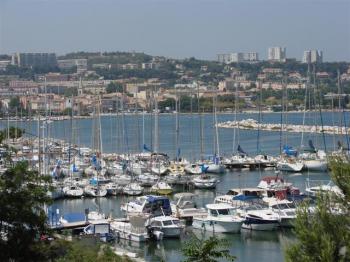
Between Marseilles and the Rhône, at the bottom of the northern slope of the mountain chain of Nerthe, (an evocating and scented name, coming from the Provençal word Nerto, in French : Myrte) : Dominating the plain, which extends towards the banks of Etang de Berre and Marignane, here is Châteauneuf-les-Martigues “Casteu-nou dou Martegue” – Far from 25 kms from Marseille, 10 kms from Martigues, 5 kms from Marignane : in the center of an area in an growing human and economic change.
Located at 5 kms from Châteauneuf, La Mède is situated along the pond of Berre, and propose the curious rocks of the Three Brothers, bathing in water. At the bottom of the hill, is located the TOTAL raffinery complexe, which activity started up on 1935 and was the beginning of the industrial rise of the community .
The number of inhabitants of our town amounts currently to 11 538.
Since 2001, our commune is twinned with an italian town called Valmadrera, located in the province of Lecco, in Lombardy.
With an equivalent number of inhabitants, and an industrial vocation, Valmadrera has a lot of common points with Chateauneuf. Located near the Lake of Côme, on a branch of the Lecco, not far from Milan, this beautiful tourisical town is and ideal step to visit one the most beautiful region of the country.
This little town is surrounded by mountains and possess moreover a beautiful monastery as well as an interesting architectural heritage.
Accommodation nearby
Visit Châteauneuf-les-Martigues
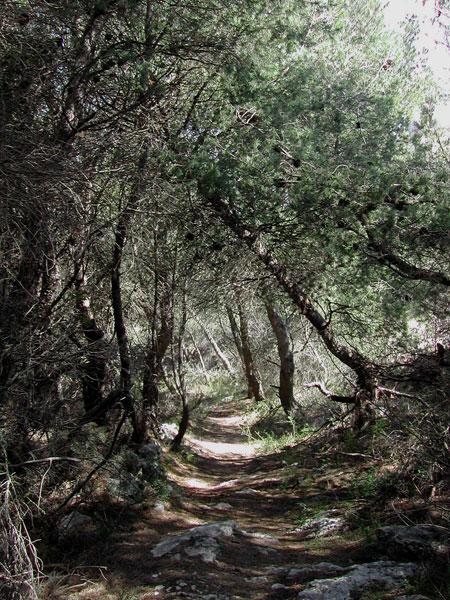
- THE SHELTER OF FONT AUX PIGEONS
The first inhabitants of Chateauneuf-les-Martigues occupied this rock shelter with a 12 meter overhang, between 6500 to 2500 before J.C., making this shelter one of the oldest known prehistoric sites around the Etang de Berre. The alignment of 5 stone blocks marks the limit of the hut which the first castelnoviens built. A slide-sound showing the extraordinary richness of this site is availiable at the museum of the friends of Castrum Vetus.
- THE PATH FROM THE OLD VILLAGE TO PUITS DE BARBE
The path started at the top of the old village (destroyed in 1972 when the A55 motorway was built) and made it possible for the inhabitants to go to the hill. Sometimes embanked wirth retaining walls, the traces of its installation are still visible over the entire length; This path, which was used by the hers of sheep and to fetch water from Puits de Barbe, was abandonned at the beginning of the 20th century.
- THE CAVE OF THE FIG TREE
This cave was dug in urgonian limestone by an underground torrent which existed between the Miocene era (5 million years) and the Wurm era (80 000 years), relic of reefs with rudists installed in shallow waters 115 million years ago appoximately.
The tracks of fossile currents are visible on both sides of the wall.The ceiling exploded under the water drive. Opposite the entry, on the other side of the path, we can observe the same tracks of fossil currents in the bed of the torrent like first way of access to the hills.
- THE PUITS DE BARBE
Located on the hillside, at the base of a funnel for rain water recuperation, it was used as cistern and water tank to water the sheep until the beginning of the 20th century.No mention appears in the old files of the community.
As a single clue, the tax statement of 1589-1590 quote a consul called “Barbo” in Provence dialect, or Barbe in French. If the curbstone in ruins is of recent itme, the bottom made up of a square hole, dug into the rock, could be ancient.
Accommodation nearby
Discover the monuments of Châteauneuf-les-Martigues
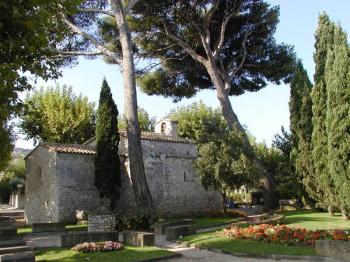
- THE SAINT CECILE CHAPEL
Located at the Nothern entry of the agglomeration of Chateauneuf, the saint Cecile Chapel is the oldest religious building of the territory of the community. The name of Saint Cecile is proven by a charter dated XIth century. But the chapel would date from the VIIIth century;. Probably built on the site of a pagan monument, it was altered on several occasions. Directed North South in the beginning, it changes orientation in the XIIth century with the construction of a new higher nave., in gothic arch, directed East-West. Excavations in 1965 and 1973 made it possible to discover, in the basement, a tank dated from 4th or 5th century and sarcophagi dated from the 6th century : one of them is exhibited in the northern part of the builing.
- SITE OF THE BLACK VIRGIN
The black virgin was blessed in 1860. Several times damaged by the bad weather, its last restoration goes back to 1999; From the orientation table at the bottom of the statue, one discovers the immense panorama of the Etang de Berre within its framework of hills. At night, the lights of the bordering cities and the airport of MARIGNANE play with the water of the lake.
- THE CHURCH OF CHATEAUNEUF
Of neo-gothic style, theSaint Cecile parish church, was sacred in 1853 and its bell-tower completes in 1855, but it collapsed in a storm in 1857 and was rebuilt afterwards. Later on, a remarkable wrought iron bell-tower was set up together with a clock.
- THE CHURCH OF LA MEDE
Sacred in 1957, Notre Dame de l’Etang chapel is of a new design and its modern lines combine sobriety and elegance.
- THE MUSEUM OF THE FRIENDS OF CASTRUM VETUS
Installed in the private mansion of the marquis de Seytres-Caumont (beginning of the XVIth century) the museum offers a voyage from prehistoric time to our era, through 7 rooms :
- Local geology; fossils collection
- Dedicated to the Lords of Chateauneuf-les-Martigues.
- Chateauneuf les martigues museeDedicated to prehistory
- Prehistoric material, type chalcolithique Campaniforme (copper age : 2200 to 1800 before J.C.)
- Local bronze age.
- Celto-ligurian occupation : material coming from th overhanging oppidum, agglomeration of Chateauneuf in the south
- The only original room of the building. Dedicated to the materiel and tools used by the inhabitants of Chateauneuf les Martigues at the beginning of the XXth century.
The museum also contains the private chapel of the lords of Seystres-Caumont.(1150 to 1789).
Accommodation nearby
Discovered the nature
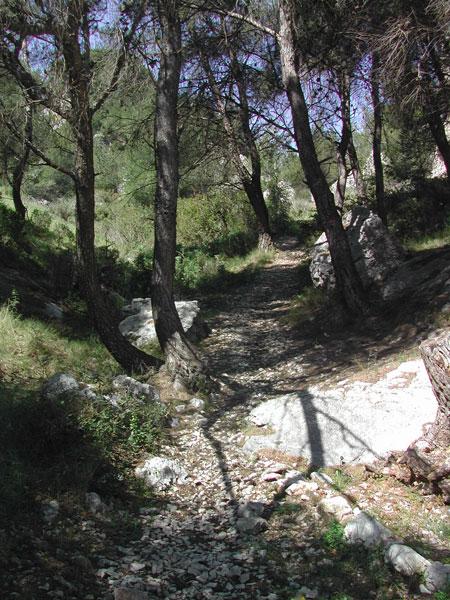
- DISCOVERY PATH FROM THE FONT AUX PIGEONS TO PUITS DE BARBE
This path is often used as a support to guided or educational walks for various public : school and others. This realization is made up of 5 themes :
- PREHISTORY
- GEOLOGY
AGRICULTURAL AND PASTORAL LIFE
- MEDITERRANEAN FLORA
- GEOGRAPHY
- FLORA
All along the path, one can observe the Mediterranenan flora of the hills and recognize among others : kermes oak, thyme, rosemary, argelas, cistus, hawthorn, euphorbium...
- THE PANORAMIC VIEW
From the heights close to the Puits de Barbe, one has a great panoramic view on the Etang de Berre and on the mountains of Provence : Sainte-Baume, Etoile, Sainte-Victoire, Lubéron, Mont Ventoux, Alpilles.
- VALLON DU SAUT AND VALLON de VALTREDE
This circuit was retained by the PDIPR. The Vallon du Saut presents varied aspects:
- prehistoric sites from the chalcolithic campaniform such as the cave of Desbaussadou and Fortin du Saut
- Vallon de Valtrède, directed East-West, was called in the 19th century “the small path from Martigues to Marseille”. Country houses and cottages in ruins testify the pas farming and pastoral activity. The white calcareous rock contrasts there with the deep green of pine wood.
- THE ETANG DE BOLMON AND THE SITE OF PATAFLOUX-BARLATIER-LES PALUNS
The site of the Etang de Bolmonis a protected natural space which is used for inventories and classifications at the National and Eurpean level and makes it possible to discover an exceptional flora and fauna.
The two names Patafloux and Barlatier associate a pine forrest and a marsh, natural area situated between the Etand de Bolmon in the North and cultivated grounds in the South.
These grounds were yielded by Total to the Conservatoire du Littoral. The management of the site is ensured by the SIBOJAI.
In the pine forrest of Patafloux, a botanical path makes it possible to meet the typically Mediterranean plants like saladelle, pourpier of the sea, salicorne, orchids (protected species).
In the wetland of the marsh of Barlatier, one can observe according to the seasons a flora and a fauna evoking Camargue. The rosellières attract foulques, mallards, clear russet-red which nest there. Some shoveler ducks, pintails, summer and winter teals take a break there during their migration from Africa, before continuing their migration to Siberia. From March to the end of June, the stretch of water conceals an incredible ballet of birds of all sorts. Take a walk, observe, but do not disturb the birds, do not touch the nests and do not touch the protected flowers.
- JAI BEACH
Between Chateauneuf and la Mède, a road crosses the canal of Marseille to the Rhône and takes you to the Jaï Beach, located on the offshore bar which separates the Etang de Berre from the Etang de Bolmon. This 5 km long road runs along the bank of the Etang de Berre, between the communities of Chateauneuf-les-Martigues and Marignane. Pebble and sand beach, watched during the touristical time, Jaï beach is a family and convivial place.
- SITE OF LES TROIS FRERES
These are rocks emerging from the water of the Etang de Berre, close to the bay of la Mède, formed during the higher cretaceous. One of these 3 rocks was destroyed partly when the canal from Marseille to the Rhône was built (1911-1926).
Accommodation nearby
Latest news on : Châteauneuf-les-Martigues
Tourism near
 Visit the city of Chateauneuf-les-martigues
Visit the city of Chateauneuf-les-martigues - 4 Museum
- 5 Monuments
Tours
 Tour to explore Marseille
Tour to explore Marseille
 In the footsteps of Marcel Pagnol
In the footsteps of Marcel Pagnol
 Martigues and its surroundings
Martigues and its surroundings
 Port-de-Bouc
Port-de-Bouc






















